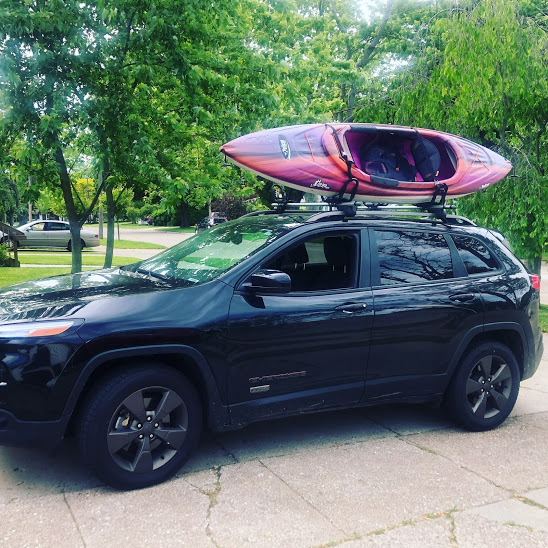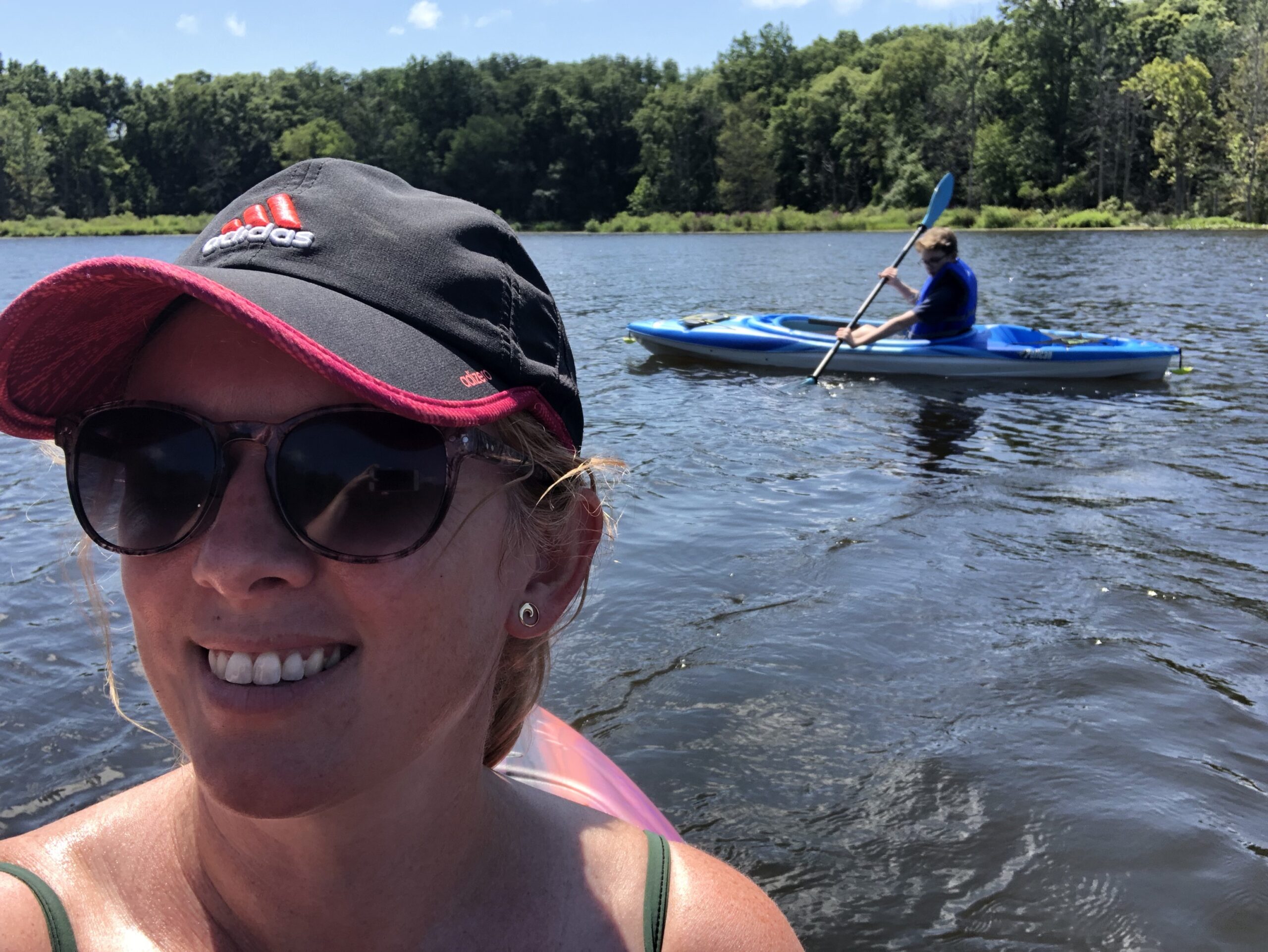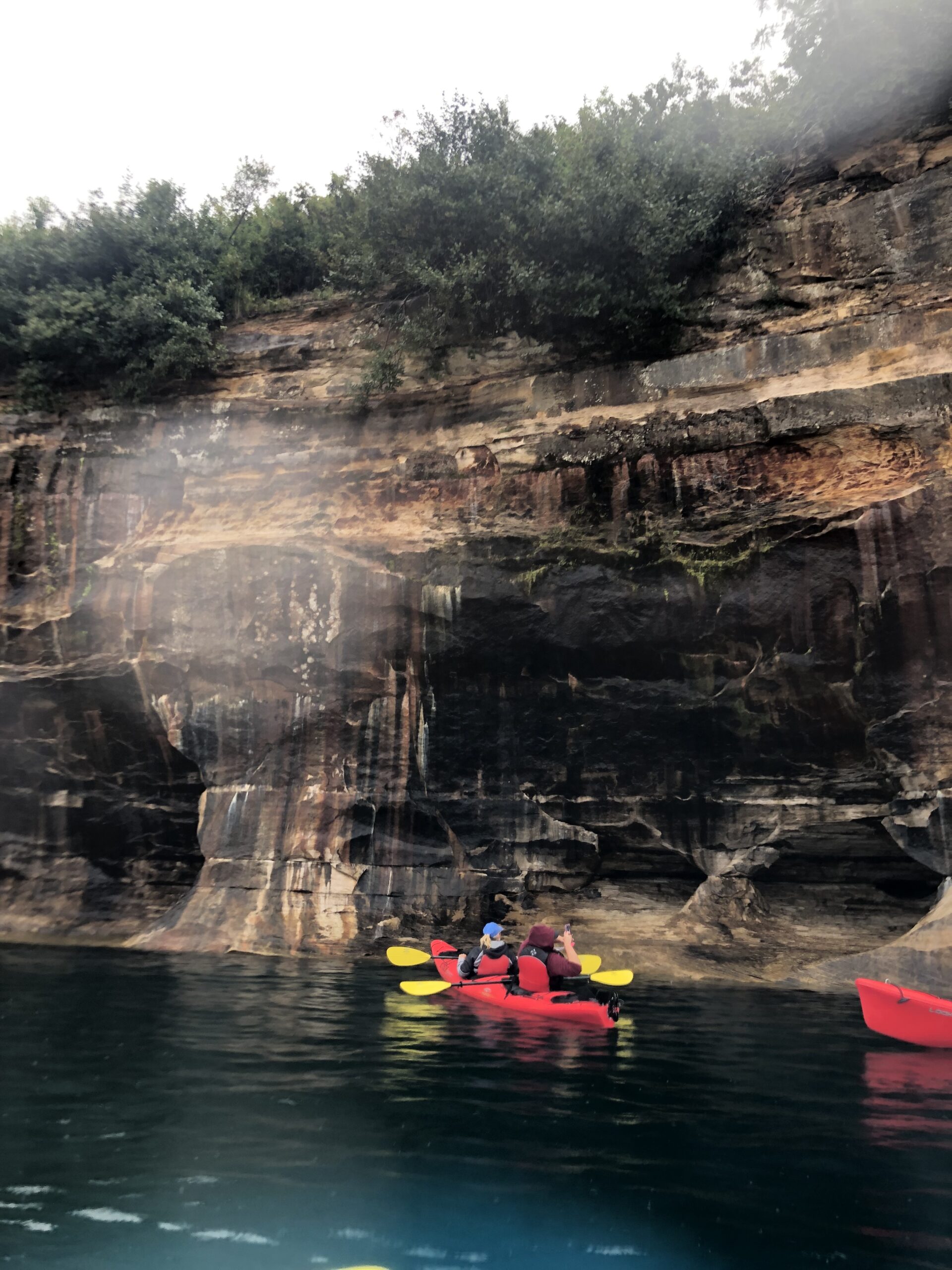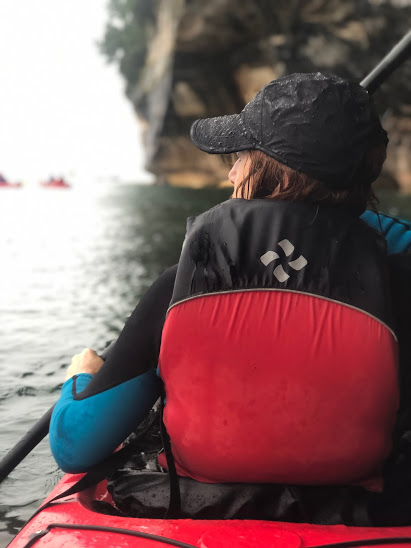Like many women, I used to feel intimidated doing “outdoorsy” stuff by myself. Until I was well into my 30s, my kayaking experiences were limited to group outings – even though I loved paddling and had literally dreamt about floating along, close to the water’s edge, for decades.
But after I got divorced, I thought “What am I waiting for?” Turns out, once the idea of waiting around for a husband to take you kayaking is off the table, you’ve only got one option left: figure it out yourself.
For the first year after I decided to really give paddling a go, my kayaking excursions mostly took place via rentals. That’s a great way for beginners to get on the water, but it can be expensive, and you’re stuck paddling on waterways close to an outfitter.
So three years ago I decided to buy my own ‘yak. Armed with very little knowledge and a not-too-hefty budget, I fell down numerous internet rabbit holes and finally made my decision: the Pelican Athena 100xp. 2025 update: While it doesn’t appear that Pelican is making that particular style anymore, there are multiple ighter weight options readily available, like the Argo 100X, weighing in at 36 pounds or even the Argo 80x at only 27 pounds!

Buying a kayak was one of those decisions that felt way more intimidating and “big” until I just jumped in. I’ve been really happy with my purchase, and while I’ll probably upgrade at some point, for now it’s getting the job done. If you’re thinking of springing for your own kayak, don’t be intimidated: go for it! Here are some things to keep in mind while you’re shopping:
- Consider what kind of kayaking you’ll be doing. When you start looking, you’ll see a wide array of choices: recreational kayaks, touring kayaks, sea kayaks, etc. I’m going to assume that most people reading a tutorial on buying your first kayak are probably in the “recreational” department. A recreational kayak is a great choice for paddling gentler rivers and lakes. They tend to be more affordable, as well as wider and shorter than touring kayaks or sea kayaks, which makes them more stable (read: less likely to dump you in the drink). They’re also slower than touring kayaks and sea kayaks, but again, unless you’re going on a long sea journey or competing in a race, do you really care? If your idea of a successful day kayaking is a leisurely paddle down a slow-moving river with a drink in hand and possibly your feet up on the bow, a recreational kayak is likely where you’ll want to start your search. Remember, you can always upgrade later as your skill level and interest increases.

- Sit-on-top or sit-inside? This is a personal choice and both have their advantages. Sit-on-top kayaks are very stable, easy to get in and out of, and they’re self-bailing, so any water that gets on the kayak just drains right through the holes. That means if you flip, you won’t have to worry about the kayak filling up with water.
On the flip side, with a sit-on-top kayak you’re riding a little higher up off the water, and I like to practically feel like I am one with the water when I kayak. It’s very difficult not to get wet on a sit-on-top kayak: even if the water is really calm, you’re almost certainly going to splash water on yourself with your paddles. They’re also heavier (more on weight later) and tend to offer fewer options for cargo than a sit-inside option. - Weight matters. Of all the traits I considered when choosing a kayak, size and weight factored in heaviest (pun totally intended). I often kayak with friends, but just as often go alone, and as a single woman it was important to me that I could easily load and unload my kayak on my own. Bigger kayaks have a reputation for being more stable, but with that length comes more weight, and when you’re trying to guide an unwieldy 9- or 10-foot piece of plastic from the ground to the top of your car, every pound counts. 50 pounds may not sound that heavy, but keep in mind that loading a kayak isn’t the same as lifting weights at the gym; it’s more like attempting to throw a very heavy, awkward spear in slow motion into a very specific place without dropping it on yourself or damaging your vehicle. I found kayaks as light as 27 pounds in my search, and if I were shorter or had less upper body strength, I may have gone with that option. The Athena 100p is 34 pounds, and it’s just about perfect for my height and fitness level. My kayak is less than 10 feet long, so it can also slide into the bed of a truck. And though the general wisdom is that longer kayaks are more stable, I’ve never flipped my Athena 100p or had a moment’s worry that I might, even while getting in and out.
- Comparison shop. I bought my kayak at Dunham’s, a local sporting-goods store. It was on sale and I had a coupon, so I got a great deal. Check sales fliers and look online, too; believe it or not, you can get a kayak shipped. Don’t forget that paddles and a life jacket/personal floatation device will add another $100-$200 to your total.
- Make sure it’s what YOU want. It’s tempting to shop for a kayak with a friend or your brother, but in the end, this kayak is going to have to work for you. Check out this excellent resource for choosing a kayak as a woman, taking into account specific factors like how YOU want to spend your time paddling and your body size and shape.

- Rent or borrow first. If you’re brand-new to paddling, it’s a good idea to try out a few different kayaks to get a sense of how different types operate and feel and what kind of kayaking you enjoy most. You can try renting from a few different outfitters (even if you don’t love the kayaks you try, you’ll at least get to experience different bodies of water) or borrowing. Chances are good you’ve got a friend with a lake cottage who has a kayak or two they wouldn’t mind you trying out. Ask around: paddlers are usually eager to share the fun with friends and I have found that we’re a generous group, happy to loan our boats and offer helpful advice.
In addition to the kayak itself, consider these add-ons:
- A rack or carrier. If you plan on kayaking solo, you’ll need a solid plan for getting your kayak to and from your house to the water! I purchased a simple THULE J-rack for getting my kayak on top of my Jeep Cherokee, and when I later bought an older-model Subaru Forester it was easy to move them over. Now that the Subaru has become the property of my son Owen and I’m driving a GMC Acadia (which has a taller body style than either the Jeep or the Subaru did), I’m considering upgrading to the Thule DockGlide Saddle. The saddles pivot to help guide the kayak into the right spot, which will reduce my number of awkward “javelin throw” style missed approaches. If you anticipate carting your kayak a long way, a wheeled carrier may also be a good investment.
- Accessories: There are a few additional things you’ll need for comfort, safety, and to actually make the kayak go where you want it to!
- You’ll definitely need a life jacket/personal flotation device, and this is an area where spending a little extra for comfort and practicality is worth it. I like a vest-style life jacket that allows plenty of room for maneuvering and isn’t too bulky or squeeze-y (remember, it will feel very different when you’re sitting down in a kayak as opposed to standing up in a sporting-goods store.)
- You may be surprised to learn that paddles don’t usually come with your kayak – they’re purchased separately! If you’re a beginner, don’t overthink this purchase too much. I have these.
- In addition to necessities like paddles and a PFD (personal floatation device), it’s a good idea to pick up a dry sack for extra clothes or valuables you don’t want to get wet. (I love all the fun prints and pretty colors on this one!) You might also consider a special waterproof case for your phone (though I usually just use a sandwich bag for mine).
I’ve got lots more to say about kayaking, but that’s enough to get you on your way. Feeling overwhelmed? Start small. Choose a kayak that feels good to you, and find a body of water you feel comfortable starting out in. In no time, your confidence will grow…and if you’re like me, you’ll be dreaming about your next kayak soon.
